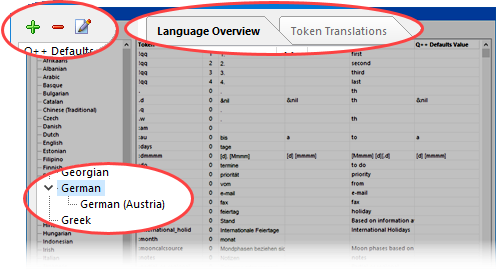
Languages hierarchy
If a set of translations, either for a client, or a different national market, differs slightly from an existing language, you can create a child language and you only need to define the differing translations.


the Languages and Translations Manager
If a translation is not found for a particular token in a language, the system will look for that translation in the language's parent, and so on and so forth until it reaches the root language, Q++Defaults.
The user interface
On the left of the Languages and Translations Manager, languages are displayed in a TreeView.
A row of buttons at the top let you add or delete languages, or modify the properties of a language.
On the left of the Languages and Translations Manager, there are 2 tabs which can be used to see an overview of the currently selected language and to add or modify token translations, or create user-defined tokens.
Topic 104044, last updated on 14-Aug-2020